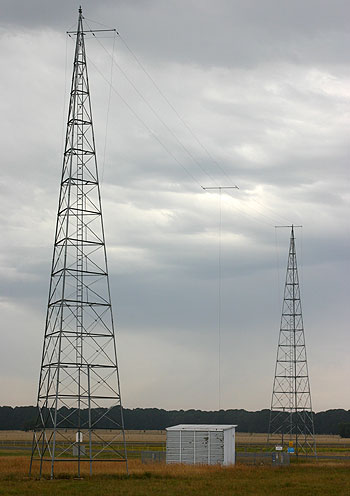How to fly an NDB: Difference between revisions
(→NDB) |
(→NDB) |
||
| Line 1: | Line 1: | ||
=NDB= | =NDB= | ||
[[image:ndb-icon.png|150px]] [[image:ndb-tower.jpg| | [[image:ndb-icon.png|150px]] [[image:ndb-tower.jpg|500px]] | ||
An Non Directional Beacon is comprised of an omni-directional Vertically polarised antenna at a known stationary location coupled to a Medium to Low Frequency Transmitter that has an amplitude modulated identification of one, two or three-letter Morse Code callsign. In Australia they use the three-letter Airport Code when located at an airport. | An Non Directional Beacon is comprised of an omni-directional Vertically polarised antenna at a known stationary location coupled to a Medium to Low Frequency Transmitter that has an amplitude modulated identification of one, two or three-letter Morse Code callsign. In Australia they use the three-letter Airport Code when located at an airport. | ||
Revision as of 19:24, 22 February 2023
NDB
An Non Directional Beacon is comprised of an omni-directional Vertically polarised antenna at a known stationary location coupled to a Medium to Low Frequency Transmitter that has an amplitude modulated identification of one, two or three-letter Morse Code callsign. In Australia they use the three-letter Airport Code when located at an airport.
The NDB is described in ICAO Annex 10 that specifies that NDBs operate between 190 kHz and 1750 Khz.
There are a few types of NBs:
- En route used to mark airways for homing etc
- Approach NDBs that have a hold and approach associated with them
- Localiser beacons for guidance to an ILS
- Locator beacon for guidance to an ILD

